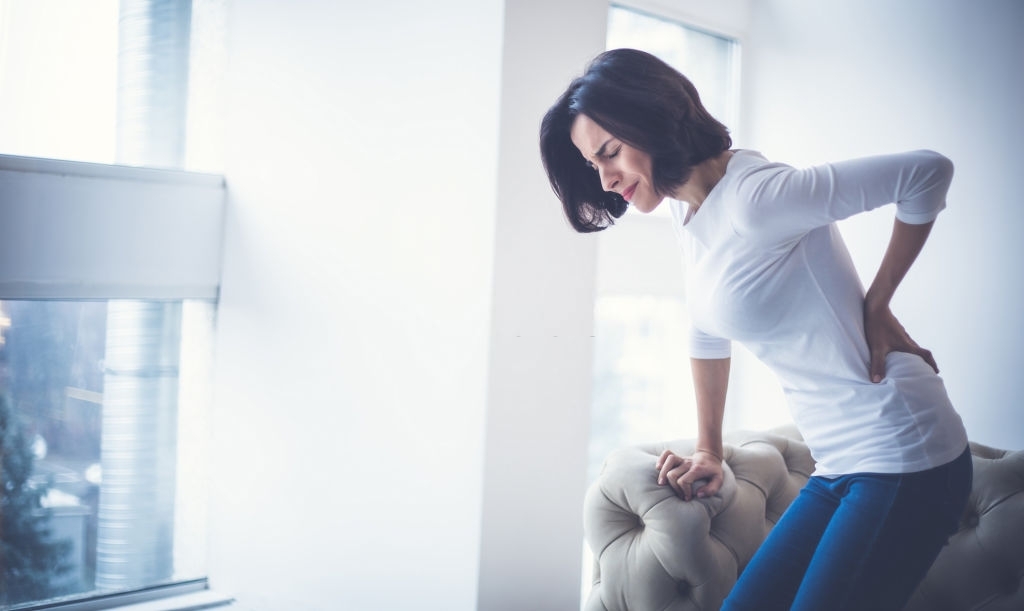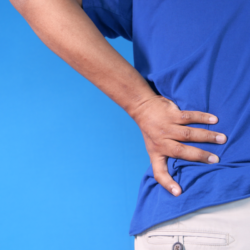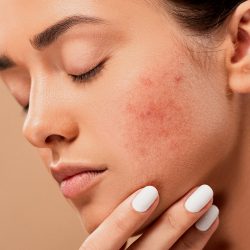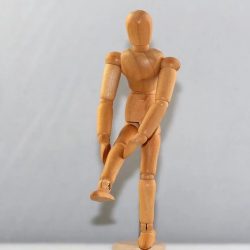Back pain is one of the most common causes of medical consultations. This article covers lower back pain, but does not cover serious trauma such as fractures, dislocations, subluxations, etc.
The cause of back pain, especially mechanical, is often multifactorial, with underlying disorders exacerbated by fatigue, muscle pain, poor posture due to bad habits, weakness in stabilizing muscles, decreased flexibility and sometimes psychosocial stress. Thus, identifying a single cause is often difficult if not impossible.
Where does this chronic back pain come from?
Most back pain and low back pain are mainly caused by disorders of the spine (spine). Muscle pain is a common symptom and is usually caused by irritation of the deep muscles by the dorsal branches of the spinal nerve and more superficial muscles consequently resulting in a local reaction to the spinal injury.
Spinal disorders result from mechanical problems, only a few indeed involve non-mechanical problems, such as infection, inflammation, cancer or fragility fractures due to osteoporosis for example.
Some pains caused by mechanical disorders of the spine are generally disc pain, pain in the nerve roots or arthritis of the joints.
What are the causes ?
The most common causes of lower back pain are:
Herniated disc
Compression fracture (usually thoracic or lumbar)
Narrow lumbar canal
Osteoarthritis of the whole spine
Spondylolisthesis
Generalized myofascial pain syndrome (fibromyalgia)
Etc.
In summary :
Back pain affects 50% of adults over 60 years old.
Most back pain is caused by mechanical pathologies of the spine, which are usually non-specific (self-limiting musculoskeletal disorder).
Low back pain often has a multifactorial origin, making diagnosis difficult.
Serious spinal or extra-spinal disorders are unusual causes.
Normal function of the spinal cord during clinical examination is best confirmed by examinations of the nerve function of the sacral roots (rectal tone, anal reflex, bulbocavernous reflex), patellar and Achilles reflexes, and motive force.
Some naturopathic advice in case of back pain:
- Self-massage:
To relieve your back pain, all you need to do is place your hands on the lower back on either side of the spine and then perform a slow, more or less heavy, friction movement. After a few seconds, you will feel a sensation of heat which will immediately relieve you.
- Keep moving:
Early mobilization, muscle strengthening exercises, prolonged bed rest or even immobilization should be avoided. Contrary to what one might think, complete rest is not recommended for low back pain. Keeping moving is the best way to recover quickly, but also to prevent a relapse. Continue your personal and professional activities, avoiding the movements that are the most painful, and you will quickly see an improvement.
- To do yoga :
To relieve your back pain, yoga is the ideal activity. In particular, it will reduce the tensions that you have accumulated there and it will relax your spine. Certain postures should be favored, including the downward dog posture (Adho Mukha Svanasana) or the child posture (Balâsana).
- Heat and cold:
Acute spasms or contractures of muscular origin can nevertheless be relieved by cold or heat.
Cold is usually preferred over heat for the first 2 days after an injury. Ice and cold compresses, however, should not be applied directly to the skin. They should be wrapped in a plastic bag and placed on a towel or clothing. The ice is removed after 20 min, then subsequently reapplied for 20 min over a period of 60 to 90 min. This process can be repeated several times during the first 24 hours.
Heat, using a heating pad, can be applied for the same period of time. Since the skin of the back may be insensitive to heat, heating with hot dressings should be done with care to avoid burns. Patients are advised not to use a heating pad at bedtime to avoid prolonged exposure due to falling asleep with the heating dressing still on their back. Diathermy helps reduce muscle contracture and pain after the acute phase.
Plants and back pain:
Very effective topically in back pain with great rapidity of action.
This herb is generally used for back pain, as well as for muscle and joint pain.
White willow is an anti-inflammatory, by acting on IL-1 beta and NF kappa B (reduction of IL-6 and TNF-α), it reduces the infiltration of polynuclear cells, smoothes the mucosa synovium, protects against the formation of osteophytes, decreases the swelling of soft tissues and bone resorption. It thus reduces the levels of inflammatory mediators.
In fact, it is an excellent analgesic indicated in rheumatism, joint pain, rheumatic flare-ups and back pain.
This plant is a powerful analgesic with anti-inflammatory activity by inhibiting cyclooxygenase-2 (COX-2), indicated in rheumatic pain, congestive attacks of osteoarthritis, back pain, arthritis and osteo -arthritis.
If your back pain persists, we advise you to make an appointment with a physiotherapist through your doctor. You will thus respect the course of care and will be eligible for reimbursement for your consultation.







